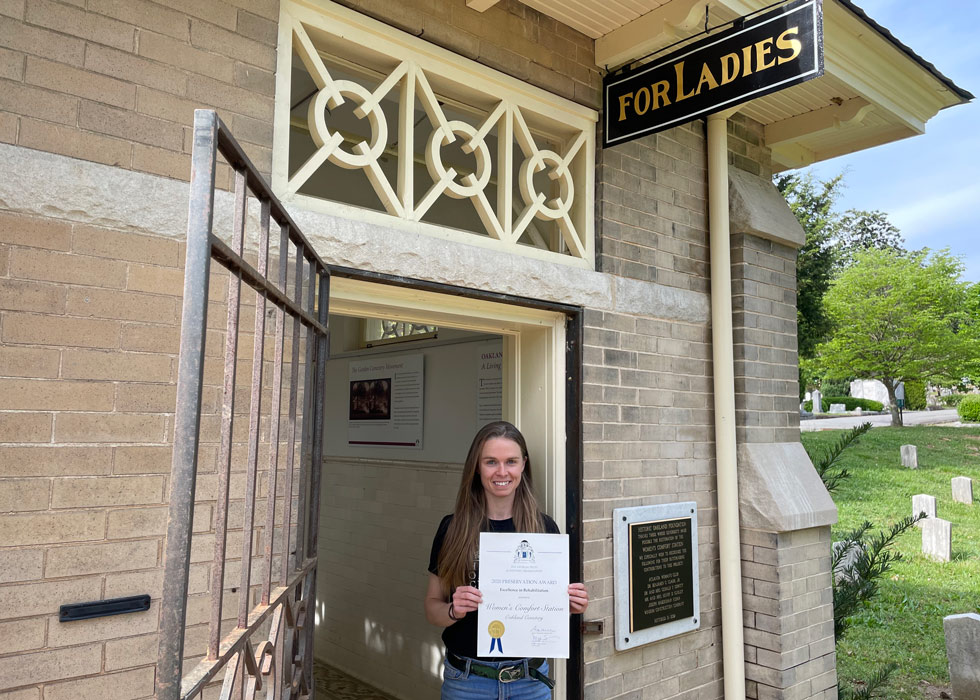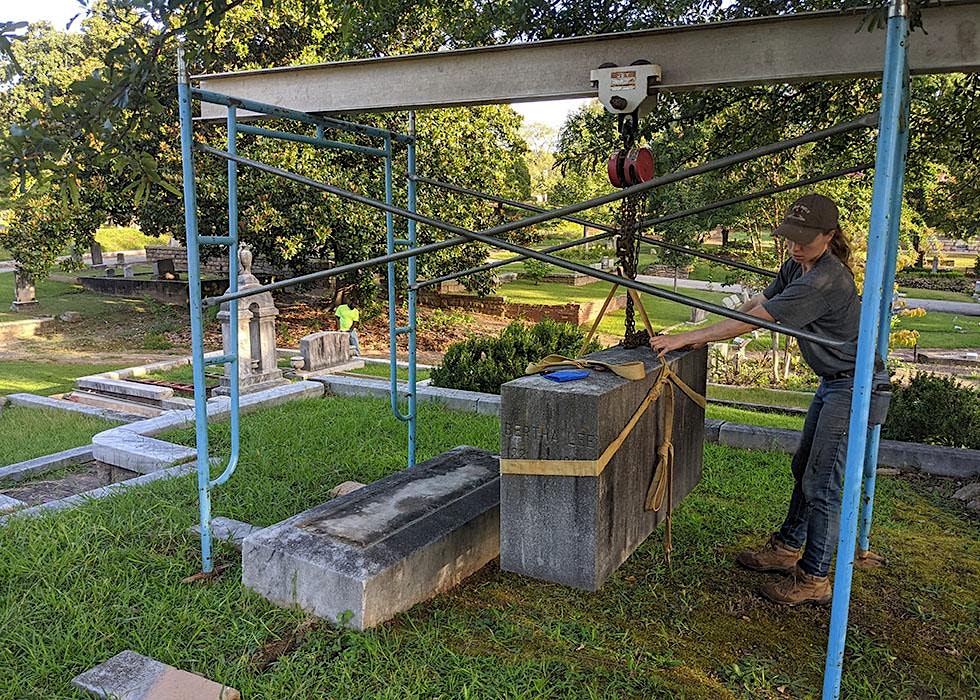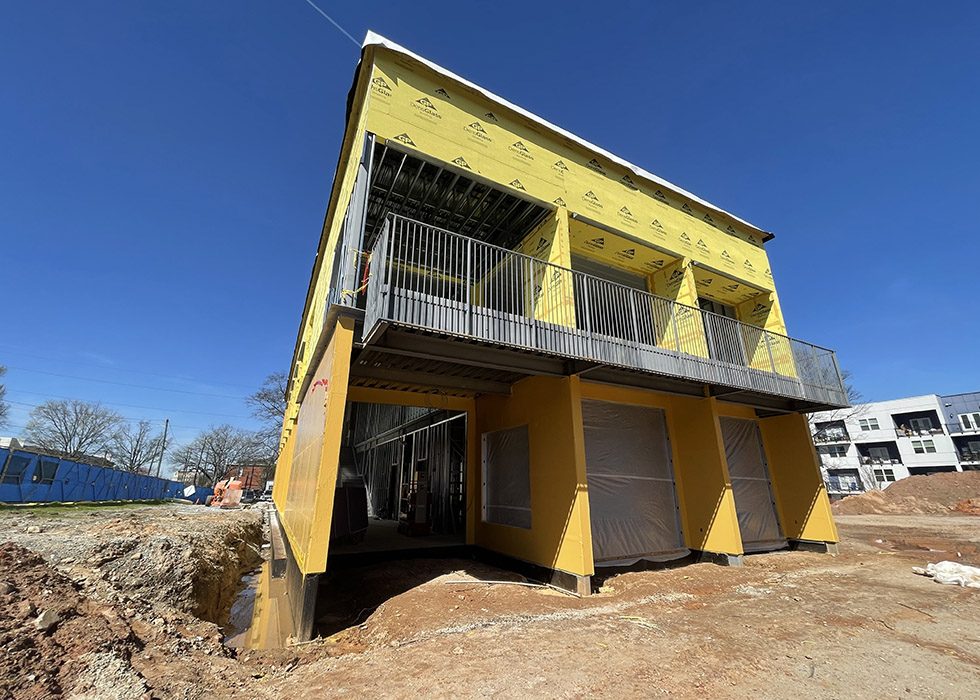
Oakland’s Women’s Comfort Station wins 2020 Historic Preservation Award
If you’ve been following Oakland Cemetery’s activities over the past few years, you’ve probably heard all about the Women’s Comfort Station. In 2019 HOF rehabilitated the small 1908 restroom building, turning it into a revolving exhibit space. In 2020 we received an award from the Georgia Trust for Historic Preservation for our efforts. The Georgia Trust for Historic Preservation is a non-profit organization established in 1973 for the purpose of promoting and supporting preservation efforts throughout the state. Although they’re headquartered in Rhodes Hall in downtown Atlanta, their influence reaches all corners of Georgia through programs like their Revolving Fund, which assists with the purchase and rehabilitation of historic homes, and Places in Peril, an annual list of important but endangered sites worthy of attention.
For more than 40 years the Trust has presented awards that recognize projects that contribute to Georgia history while adhering faithfully to the Secretary of the Interior’s Standards for preservation, restoration, or in our case, rehabilitation. Although these terms are sometimes used by the general public interchangeably, they have differing definitions according to the Secretary of the Interior. I could write an entire blog on this topic, but here’s the difference in brief: To preserve a historic property means to stabilize and maintain it without replacement of key features or drastic changes to its use, and to restore means to return a building to a specific time period, so removal and replacement of features to accomplish this goal are more acceptable. Rehabilitation is the standard with the most “wiggle room,” allowing for alterations and upgrades that will make the building suitable for a new use. The Women’s Comfort Station project combined elements of all three standards but ultimately fell under the rehabilitation category due to the significant changes we made in order to allow for the building’s new use as an exhibit space.



